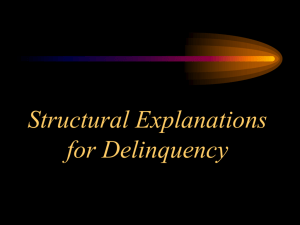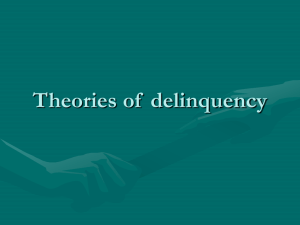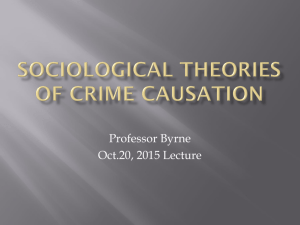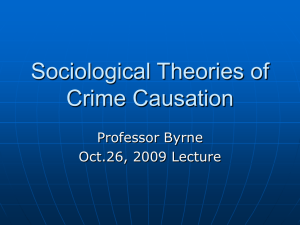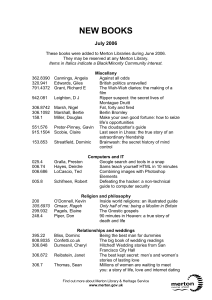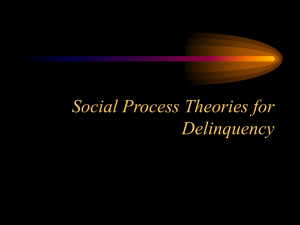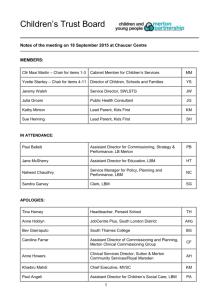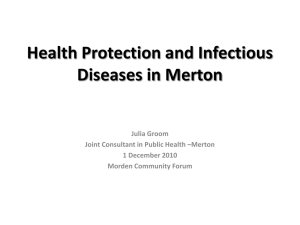Causal Sociological Theories
advertisement
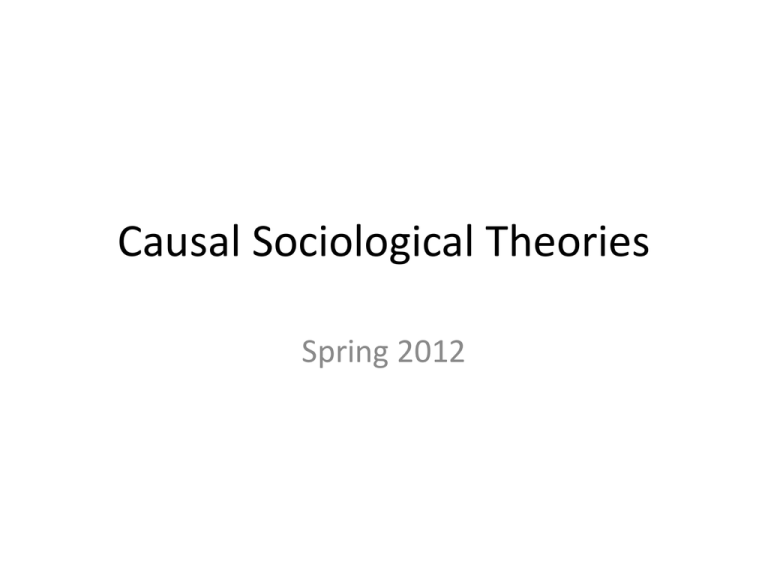
Causal Sociological Theories Spring 2012 Origins of Social Causation • Émile Durkheim (1890s) • Social Facts – Treat social facts as things – Explain social facts with social facts • Regulation and integration and suicide Durkheim’s Types of Suicide Integration Regulation Too Strong ALTRUISTIC* e.g., jumping on grenade FATALISTIC* e.g., honorific, ritualistic suicide such as hari-kari (SP?) Too Weak EGOISTIC "excessive individualism," "cult of the individual," "goallessness," Protestant»Catholic unmarried»married childless»parents ANOMIC Sudden loss of sense of social regulation, e.g.:economic disasters and surges in prosperity • **TAKEAWAY: social environment, social world, surroundings as cause Place Matters • The Chicago School – William Isaac Thomas and Florian Znaniecki: attitudes/values form in process of interaction with situation – Robert E. Park, Ernest W. Burgess: cities as environments, urban zones, natural areas – Clifford Shaw and Henry McKay: mapping delinquency matched natural areas over time even though different groups — delinquency not group characteristic but zone – Social Disorganization : in some areas, family, neighborhood, local institutions do not provide the necessary guidance, socialization, feedback, etc. necessary to avoid delinquency • Superseded by other theories, but big contemporary focus on neighborhoods, importance of local institutions, community policing, etc. Subcultural Theories • Premise: Deviant behavior just as much a learned behavior as conforming behavior • Challenge: Need to explain process by which place matters Cohen’s Subculture Theory[1 • Main book: Delinquent Boys (1955) • Predominance of non-purposive, gang related behavior, often malicious, irrational, deliberately hurtful. • This symbolic acting out reflects Status Frustration = conflict between achieved status and middle class values presented in school and the ascribed status and real obstacles they see in their family life. • Status frustration leads to reaction formation that involves substituting a set of "gang" values for those of middle class society. In place of mainstream norms that say one is supposed to have ambition, take responsibility, focus on achievement, delay gratification, be rational, use time constructively, respect property, we find rejection of ambition, excuse making, rejection of school, pleasure seeking, destructive behavior, and hanging out. These things are seen by Cohen as a rejection of middle class culture and replacement with a coherent set of values and practices. • Although superceded by theories that took a more nuanced view, these ideas survive in contemporary views of "gangsta" and "ghetto" culture. Lower Class Culture as a Deviance Generating Milieu • Miller, Walter B. (see annotation) • Pushed beyond taking middle class culture as norm for culture per se • What it takes to survive/thrive in some contexts may be at odds with "middle class culture" – – – – – "trouble" is an everyday category toughness, street smarts as survival skills search for excitement/thrills fatalism: what happens beyond my control desire for autonomy - resentment of rules/authority • Big focus on peer group as reference group — cf. Merton and others. Sutherland’s Theory of Differential Association • Focus shifts more to how than why • Behavior and attitude learned in interaction in groups • We learn techniques, values, attitudes, rationalizations, etc. • One becomes delinquent if the balance of what one is exposed to is in that direction • Both conforming and non-conforming behavior generated by same needs/desires Strain Theories • Society puts people in a bind — you should want X but you can't have X. Psychologically, it's about wants/desires again, but values recognized as "universal" with addition of unequal distribution of access or means of achieving them. Merton’s Strain Theory Adaptation Conformity Innovation Ritualism Cultural Goals Accept Accept Reject Institutionalized Means Examples Accept Reject Robber barons, "smarts," wheeling/dealing, tolerance for rogues, much white collar crime, organized crime. Expect among lower class? Accept Is it deviant? Giving up. "I'm not sticking my head out?" "Don't aim high and you won't be disappointed." Expect among lower middle class? Retreatism Reject Reject Probably least common. Psychotics, autists, pariahs, outcasts, vagrants, tramps, drug addicts. Failure leads to giving up on the goals as well as the means. Dropping out. Rebellion Replace Replace Reject status quo and actively attempt to set up alternative goals and means. Merton’s Theory of Anomie • Robert K. Merton - major figure in 20th c American sociology Agnew’s General Strain Theory (GST) • Merton said what you want is "normal" but you can't get it legitimately so you break the rules • Agnew says situation/environment might be intolerable and what we see is attempt to escape. • Argument starts with fact that as explanation of lower class deviance doesn't work so well and for other classes even less • So, revise with short-term-ness of young folks' goals • But still all based in idea that "blockage" happens with respect to pursuit of goals. Change focus to painavoidance. Situation is aversive but one cannot escape. • Cf. contemporary work on bullying. Cloward and Ohlin’s Differential Opportunity Theory (c. 1960) • • • • • • • • • • Building on Merton but taking "means" (both legit and illegit) as variables. One needs access to a criminal means — it's not just automatically a fall back if legit means not available Three possible outcomes Access to legit means blocked but illegit means available : criminal subculture (normal criminal behavior) No access to local criminal culture - leads to gang violence as release for anger/frustration - conflict subculture Some will, in the face of double failure go in the direction of retreatist subculture — dropping out, drugs, etc. Cloward, co-founder of the National Welfare Rights Organization, big force behind "motor voter" Wrote "The Weight of the Poor: A Strategy to End Poverty" with Frances Piven in The Nation in 1966. It advocated ending poverty by pushing federal government to implement guaranteed minimum income. Some right wing activists treat this article as a founding document in the liberal effort to ruin America. Ohlin worked for Mobilization for Youth in the 1950s. It was forerunner of War on Poverty programs of the 1960s. GIST: Delinquency not product of youth who are bad, but rather a product of poverty. Matza: Delinquency and Drift • Rejects ideas that (1) individuals are "committed" to delinquent life style or (2) forced into it by structural forces. • Rather, it's a biographical process of decisions and choices • If there are "subcultural norms" they permit deviation from dominant norms more than require it Sykes and Matza "techniques of neutralization" Delinquents do not have different values. Have styles of thinking that blunt voice of social norms Deviants able to redefine behavior so it fits with social values Techniques are extensions of patterns of thought already expressed in society. Bending rules is a normal social behavior that we find all across the social system. denial of responsibility denial of injury denial of victim condemnation of the condemners appeal to higher loyalties
